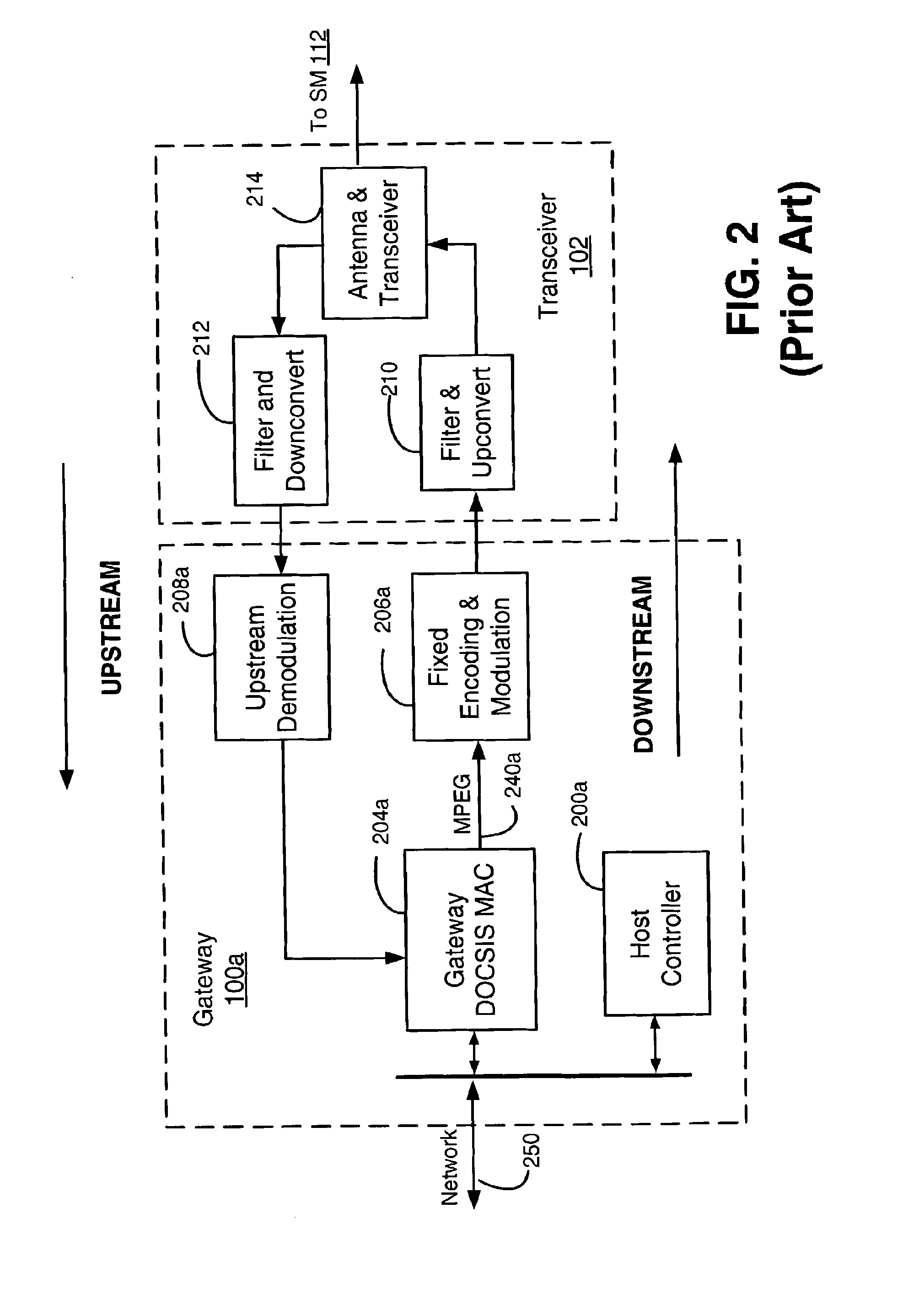Downstream Time Domain Based Adaptive Modulation for DOCSIS Based Applications
a time domain and adaptive modulation technology, applied in the field of broadband communication systems, can solve the problems of degrading the signal power level (and thus snrs) received by individual subscribers, and affecting the service life of subscribers
- Summary
- Abstract
- Description
- Claims
- Application Information
AI Technical Summary
Problems solved by technology
Method used
Image
Examples
Embodiment Construction
[0033]A satellite communication system implements downstream adaptive modulation that allows subscribers receiving the downstream channel with a higher SNR and / or operating in less degraded channels to achieve higher bandwidth efficiency. This results in a combination of improved channel capacity, increased throughput, and improved coverage.
[0034]An embodiment of the method independently and adaptively controls the throughput rate of data traffic destined for each of a plurality of receivers. First, a number of packet queues are defined. Each packet queue is associated with a unique set of transmission parameters. For example, the most robust queue could be defined as using QPSK modulation with a FEC code rate of ½. This queue has relatively low throughput but also requires a very low SNR received at the SM. The least robust queue could be defined with 16 QAM modulation and a FEC code rate of ¾ for example. This queue has a much higher throughput, but also requires higher received S...
PUM
 Login to View More
Login to View More Abstract
Description
Claims
Application Information
 Login to View More
Login to View More - R&D
- Intellectual Property
- Life Sciences
- Materials
- Tech Scout
- Unparalleled Data Quality
- Higher Quality Content
- 60% Fewer Hallucinations
Browse by: Latest US Patents, China's latest patents, Technical Efficacy Thesaurus, Application Domain, Technology Topic, Popular Technical Reports.
© 2025 PatSnap. All rights reserved.Legal|Privacy policy|Modern Slavery Act Transparency Statement|Sitemap|About US| Contact US: help@patsnap.com



